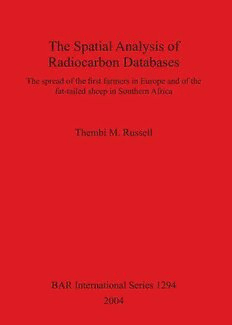
The Spatial Analysis of Radiocarbon Databases: The spread of the first farmers in Europe and of the fat-tailed sheep in Southern Africa PDF
299 Pages·2004·14.521 MB·English
Most books are stored in the elastic cloud where traffic is expensive. For this reason, we have a limit on daily download.
Preview The Spatial Analysis of Radiocarbon Databases: The spread of the first farmers in Europe and of the fat-tailed sheep in Southern Africa
Description:
This work analyses two spatially referenced radiocarbon databases for the spread of Europe's first farmers and for the spread of the first sheep in southern Africa respectively. The methods for visualising large-scale diffusion processes are compared using the European database; these include chronology maps, isochron maps, and a new simulation using the probability distribution of calibrated dates. The patterns in the radiocarbon data are then quantified by using linear regression of both calibrated anduncalibrated dates to calculate rates of spread and possible departure points for the European data at two scales of analysis, continent-wide and by demic and cultural region. The new analytical technique, using the whole of a date's calibrated range, is then applied to the database for the spread of the first sheep in present day South Africa. Two competing hypotheses for the route of the spread, a western coastal route from present day Namibia southwards, and an interior route are tested by analysing the spatial and temporal patterns in the radiocarbon data.
See more
The list of books you might like
Most books are stored in the elastic cloud where traffic is expensive. For this reason, we have a limit on daily download.
